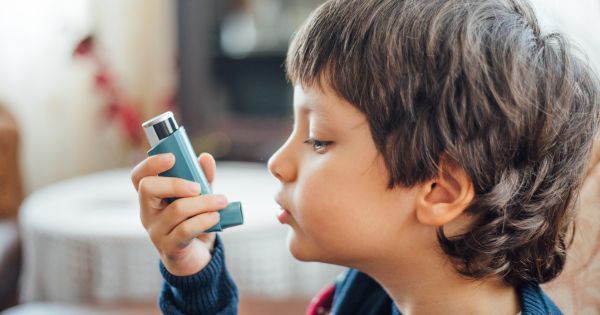What is an allergy? An allergy refers to how the immune system reacts to foreign matter entering the body, such as pet dander, bee venom, or pollen. It also occurs when food that’s customarily eaten causes a reaction.
The immune system creates and releases substances called antibodies. If you have an allergy, your body produces antibodies, which identify allergens as dangerous, even though they’re not. This can inflame your sinus, digestive system, airways, and skin.
The severity of an allergic reaction may vary from one person to another and range from minor allergy to anaphylaxis. Although most types of allergies have no cure, there are treatments that may help alleviate allergy symptoms.
If your family has a history of allergies, your child might also be prone to developing allergies. Of course, you don’t want to see them suffer. Since you can’t always control everything your child comes into contact with, it’s important to observe them closely for any symptoms of allergies.
Below are the common childhood allergies every parent should know and possible treatment options to improve your children’s quality of life.

Eczema
Atopic Dermatitis, commonly referred to as eczema, is a persistent condition manifested through dry, itchy, and swollen skin. It’s prevalent, affecting approximately 4 to 8% of children worldwide. While not an allergy itself, eczema is often associated with other allergic conditions. A significant number of children with eczema also have asthma, hay fever, or food allergies, or they may come from families with a history of these conditions.
The exact cause of eczema remains unknown. In infants, it typically appears as rashes on the head or face, which may spread to the torso and arms. The skin becomes itchy, dry, sensitive, and irritated.
Symptoms of eczema are as follows:
- Dry skin
- Scratching can lead to more itching
- Red rashes
- Thick patches in common areas, including arms, legs, nape, back, chest, and cheeks
- Skin infections due to scratching
Here are things that can make your child’s eczema worse:
- Dry air
- Rough fabrics
- Soaps and detergents
- Sweating
- Certain foods, including nuts, cow milk, eggs, soy, seafood, and wheat
If your child shows symptoms of eczema, seek medical attention immediately to prevent the condition from worsening. Your doctor may recommend low dose allergen therapy or other possible treatments to help alleviate the symptoms.
Allergic Rash
Allergic rash is a condition that occurs when a child’s skin reacts to allergens they are sensitive to. This is also known as allergic contact dermatitis.
Symptoms of allergic rash may include the following:
- Skin rashes
- Skin redness
- Constant itching that may worsen over time
- Leathery, scaly, and thick patches that may develop as time passes
Like eczema, an allergic rash may worsen if your child comes in contact with the following things:
- Oak and poison ivy
- Shoe chemicals and dyes
- Cosmetic products
- Topical medicines (treatments that are applied to the skin), including antihistamines, neomycin, and skin-numbing solutions (anesthetics)
Seek immediate medical attention when there’s a skin infection (e.g., blisters and pus), you find it hard to breathe, your nasal passages hurt, and the allergen damages the lining of your digestive tract.

Hives (And Swelling)
What are hives? Hives are characterized by itchy red patches or bumps on the skin. They may last for several minutes to several hours and may come and go for several days. The following may act as a trigger for hives, such as:
- Medications, especially antibiotics
- Latex
- Viral infections
- Pet dander
- Pet saliva
- Insect stings
- Insect bites
- Food like peanuts, soy, wheat, seafood, strawberries, eggs, milk, and nuts
However, hives may also appear without triggers in some cases.
If your child develops hives, there’s a possibility of them getting a type of swelling known as angioedema. This appears on soft skin around the eyes, genitals, and mouth. Usually, it doesn’t show up without hives.
While hives themselves are not typically life-threatening, they can be a sign of a more serious allergic reaction. If your child experiences breathing difficulties or if their throat or tongue starts to swell, seek medical attention immediately.
Asthma
Asthma is a common condition where airways swell, narrow, and produce mucus. This can lead to breathing difficulties, coughing, whistling (when breathing), and shortness of breath.
For most people, asthma isn’t something to be concerned about. But for some, it can be a life-threatening problem and may interfere with your daily life.
Below are the symptoms of asthma:
- Chest pain
- Chest tightness
- Shortness of breath
- Trouble sleeping due to coughing, shortness of breath, and wheezing
- Wheezing or coughing attacks
And here are the signs that your condition is getting worse:
- Symptoms are becoming more frequent
- Breathing difficulties are becoming more severe
- The need to use an inhaler is becoming more often
Unfortunately, asthma has no cure, but there are ways to manage its symptoms. And since asthma changes with time, working with your doctor is crucial to monitor your symptoms and control your treatment as necessary.

Food Allergies
Millions of children across the world have food allergies. Children may acquire their food allergies from their mothers through breastfeeding because they also eat what their mothers eat.
If you think your baby gets your food allergy, you can have them tested for it. But you can prevent sharing your food allergies with your kids by eliminating potential allergens from your diet.
The most common food allergies in children are milk and peanuts. Others include fish, shellfish (e.g., crab, lobster, shrimp, and crayfish), eggs, tree nuts (e.g., pecans, walnuts, and cashews), soy, and wheat.
If you think your child is allergic to a particular food, consult a doctor immediately to relieve their symptoms and prevent it from worsening.
How Are Allergies Treated?
Your doctor may recommend the following treatment options to reduce your child’s allergy symptoms:
- Allergen Avoidance: First, your doctor will identify the possible things that may have triggered your child’s allergy. Once identified, make sure they avoid contacting them to reduce the risk.
- Medications: Medications may help improve your child’s reaction to allergens and relieve their symptoms. Your healthcare provider may recommend over-the-counter pills, sprays, or eyedrops, depending on your child’s allergy.
- Emergency Epinephrine: If your child’s allergy is severe and is at risk of anaphylaxis, they might need to carry an emergency shot of epinephrine every time. Epinephrine shots may help reduce the symptoms until they receive treatment.
Through identifying triggers and applying suitable treatments, your child’s allergies can be effectively controlled.
Final Words
Common allergies in children include eczema, hives, allergic rash, asthma, and food allergies. If your child exhibits the symptoms mentioned earlier, seek immediate medical attention to reduce the risk of developing more severe symptoms. Unfortunately, there’s no cure for many allergies, but there are ways to manage their symptoms.
 Kaboutjie SA Mommy Blogs by Lynne Huysamen
Kaboutjie SA Mommy Blogs by Lynne Huysamen





My kids do not have allergies but they struggle with sinuses.
Please also do an article about sinuses and how to deal with them.
I will most certainly look into it. My husband has allergies and terrible sinus problems, I’m just so glad that my kids didn’t get that from him. My mom and both my sisters also have problems, thankfully I was skipped and passed on my good genes to my kids.